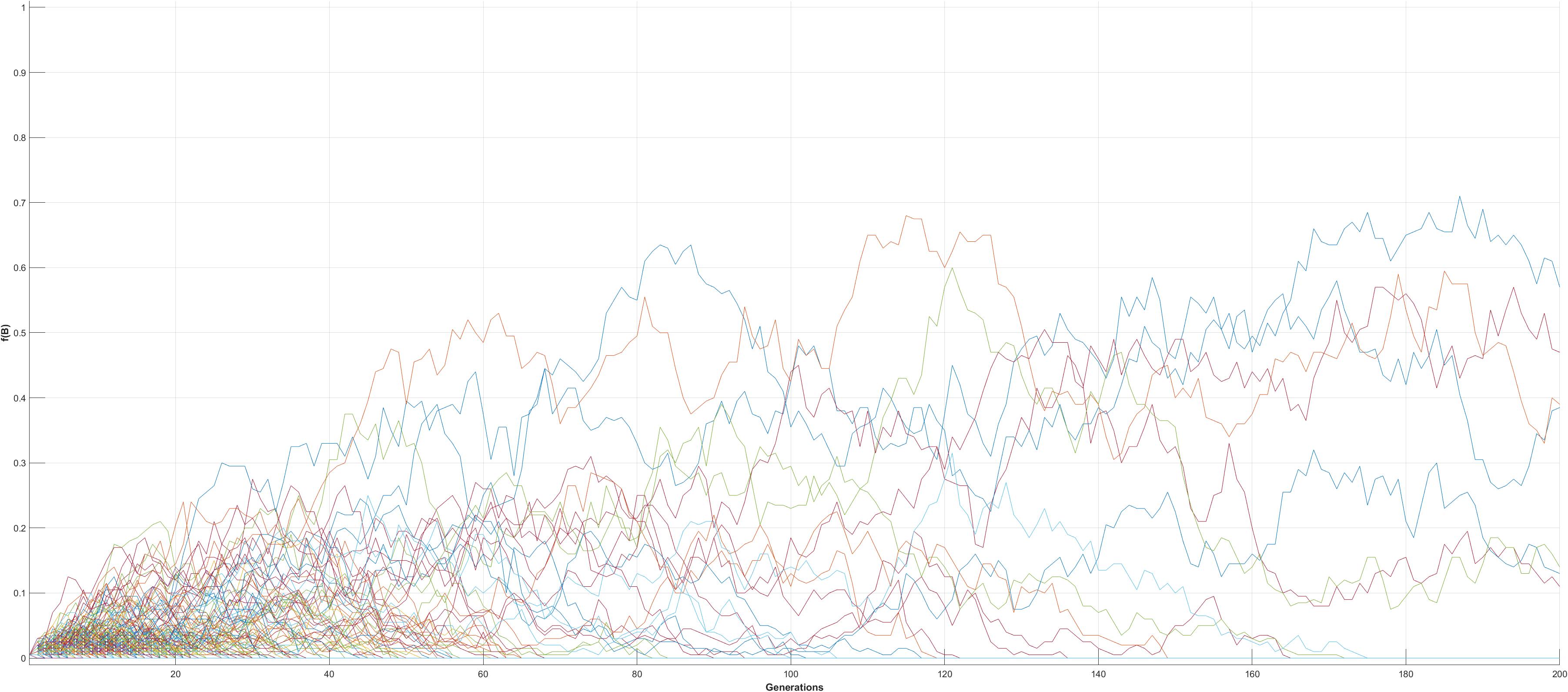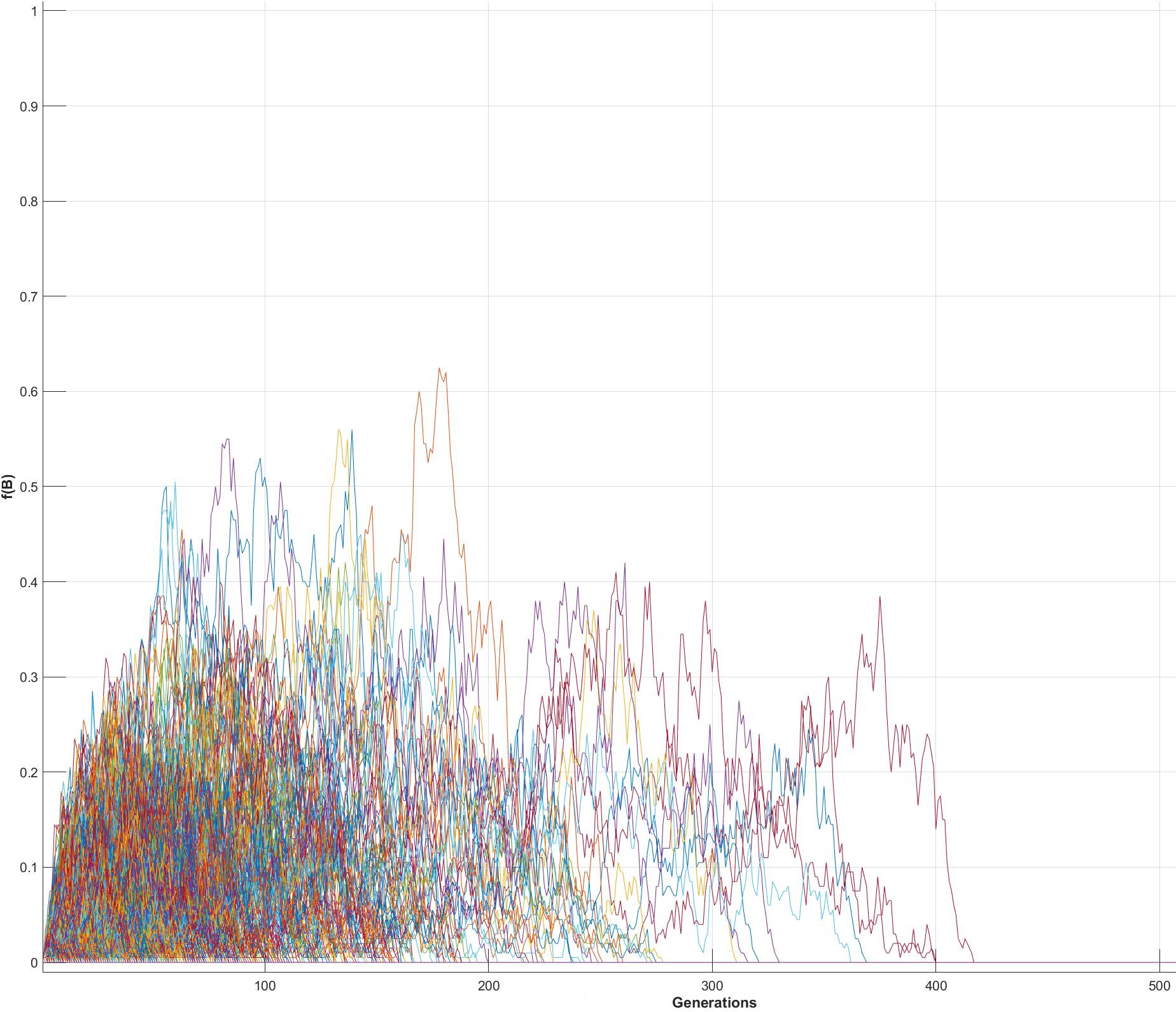
Drift & Selection on rare alleles with weak selective disadvantage in finite populations
(N = 100, f(B0) = 0.005; W0 = W1 = 1.0, W2 = 0.9)
Trajectories of a strongly deleterious (s =
0.1, W2 = 0.9) rare mutant allele in
multiple populations (N = 100 @) from an initial single copy f(B)
= 1/200 = 0.005. More 90% of replicates go to f(B)
= 0 within 20
generations: ~20 are still polymorphic at t = 100
generations, and seven at t = 200 generations.
The long-term expectation for this combination of s and
N , where s > 1/2N,
is f(B)  0, despite drift.
0, despite drift.
Under the same conditions as above, with 10,000 replicates, only five populations (0.005 %) reach f(B) > 0.5 at any time, and all populations go to f(B) = 0 in less than 500 generations.

Under the same conditions as above, with 10,000 replicates, only five populations (0.005 %) reach f(B) > 0.5 at any time, and all populations go to f(B) = 0 in less than 500 generations.

Figures & Text material © 2025 by Steven M. Carr